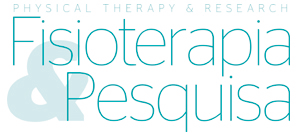ABSTRACT
This study aims to assess the correlation between walking capacity, performance, and confidence and the number of falls in post-stroke individuals, in addition to investigate which of these walking-related variables could predict falls in this population. In total, 95 post-stroke individuals were evaluated according to the number of falls in the last year and walking capacity (10-meter walk test), walking performance (ABILOCO-Brazil) and walking confidence (modified Gait Efficacy Scale). Pearson’’s correlation coefficient was used to assess the correlations between variables. Multiple linear regression was used to assess whether walking-related variables can predict falls in post-stroke individuals. No significant correlations were found between capacity (p=0.87) and walking performance (p=0.06) and number of falls. A significant, negative correlation, with moderate magnitude, was found only between walking confidence and falls (r=−0.43; p<0.01). In the regression analysis, only walking confidence remained in the model (p<0.01) as a predictor of the number of falls in post-stroke individuals, explaining 18% (R2=0.18) of this variable. Thus, this study results demonstrated that only walking confidence is directly related to the number of falls in post-stroke individuals, which is also the only variable that can be considered a predictor of this event in this population.

 Walking capacity, performance, and confidence as predictors of falls in post-stroke individuals
Walking capacity, performance, and confidence as predictors of falls in post-stroke individuals